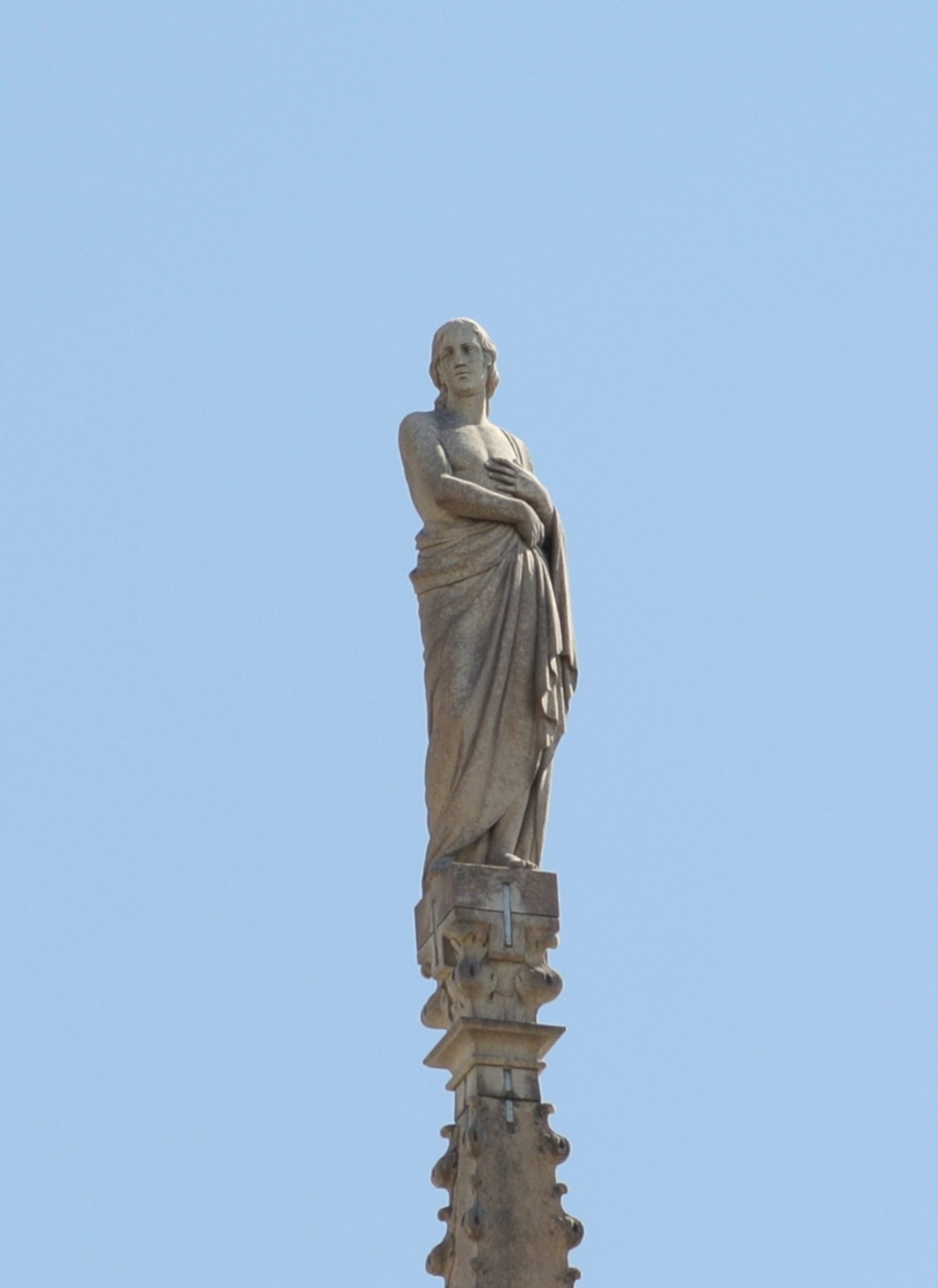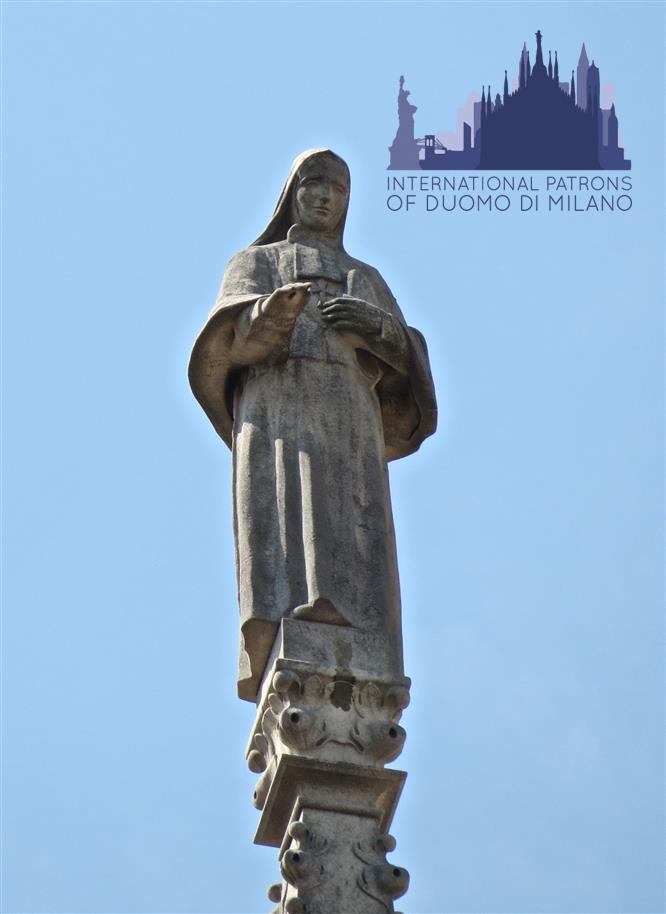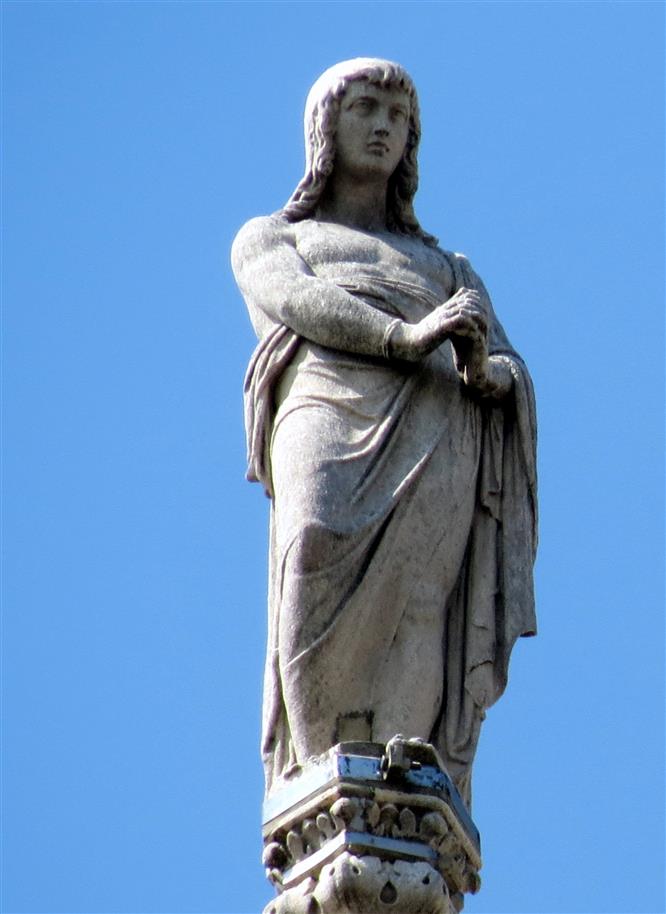Saint Magdalene is defined as “Apostle of the apostles”. Her story is told to us by the evangelist Luke, who describes her as a prostitute, a version that persists to this day, despite there being no certain sources regarding this news. Furthermore, Magdalene appears in the Gospels in another important moment, namely when she accompanied Jesus to Mount Calvary and remained under the cross to observe him together with other women; furthermore, she was the one to discover the absence of Jesus’ body from the tomb: she was the first woman to announce the Easter message. Magdalene always remained present, she never ran away and never denied her love for Christ: for this very reason the memory of Mary Magdalene was elevated to a feast the 22th July of 2016.
Tales of the statue in Dome’s building site:
The statue that stands on the G74 spire representing Santa Maria Maddalena was created by Aldo Andreani in 1953, and was never moved from the moment of its installation.
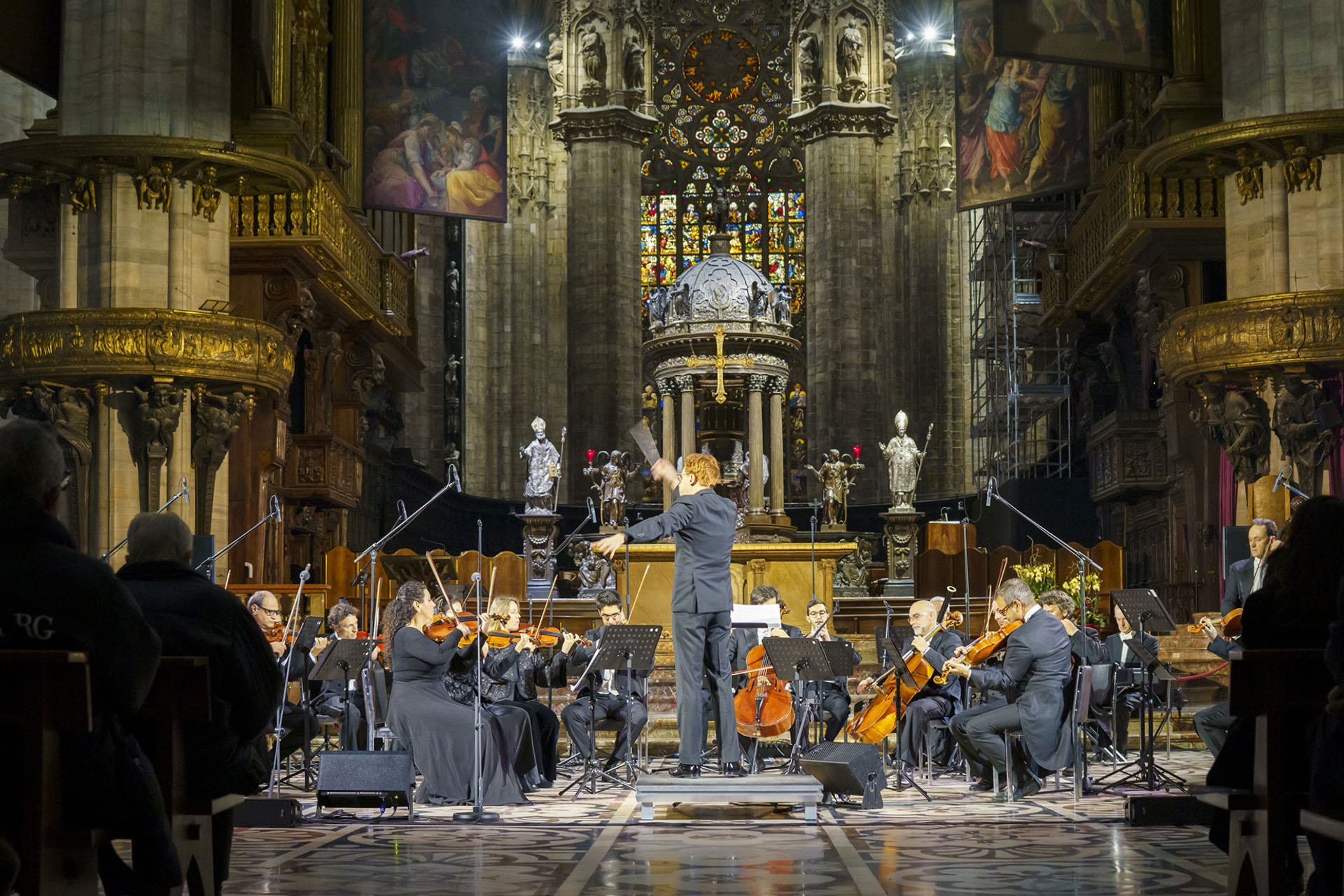
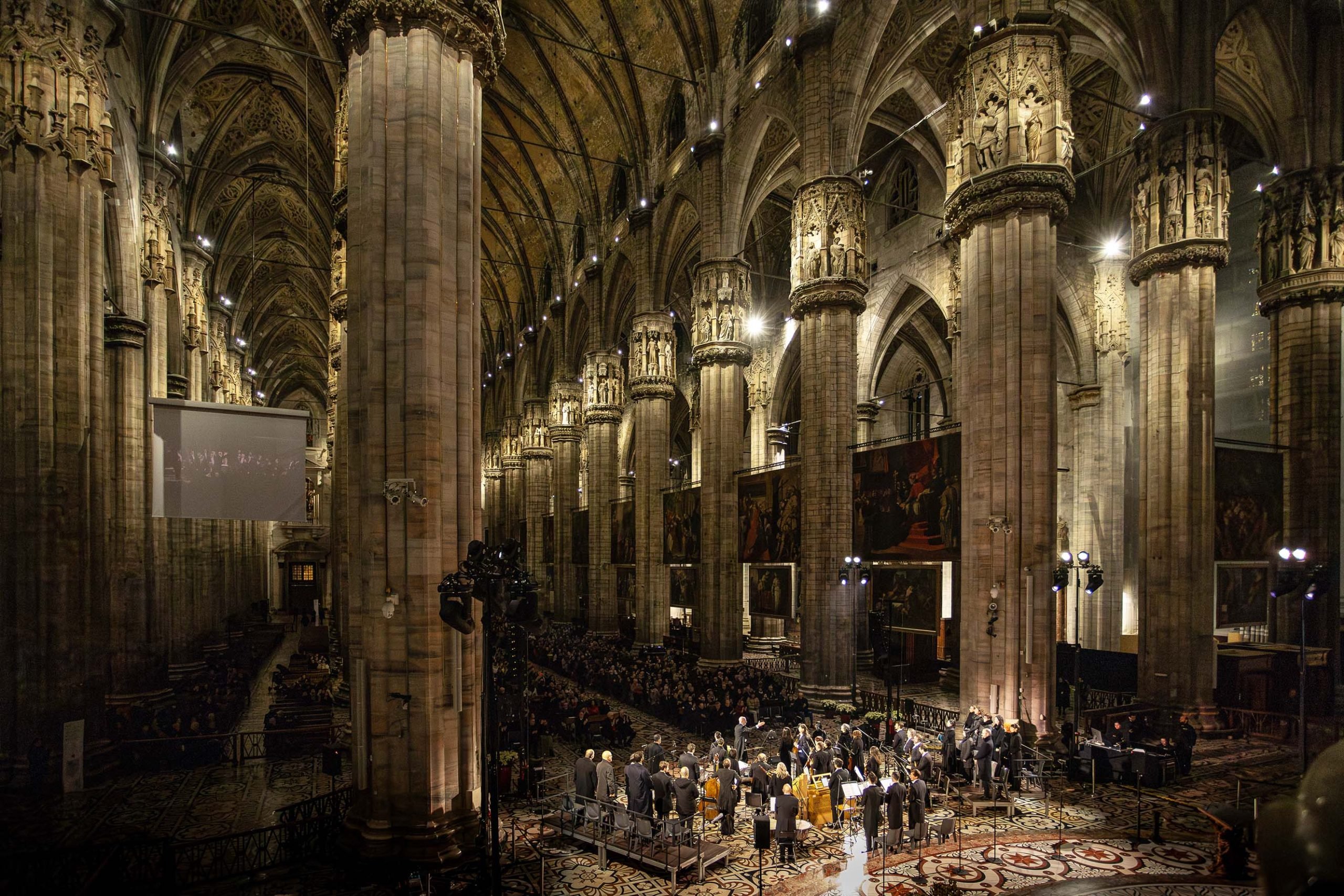
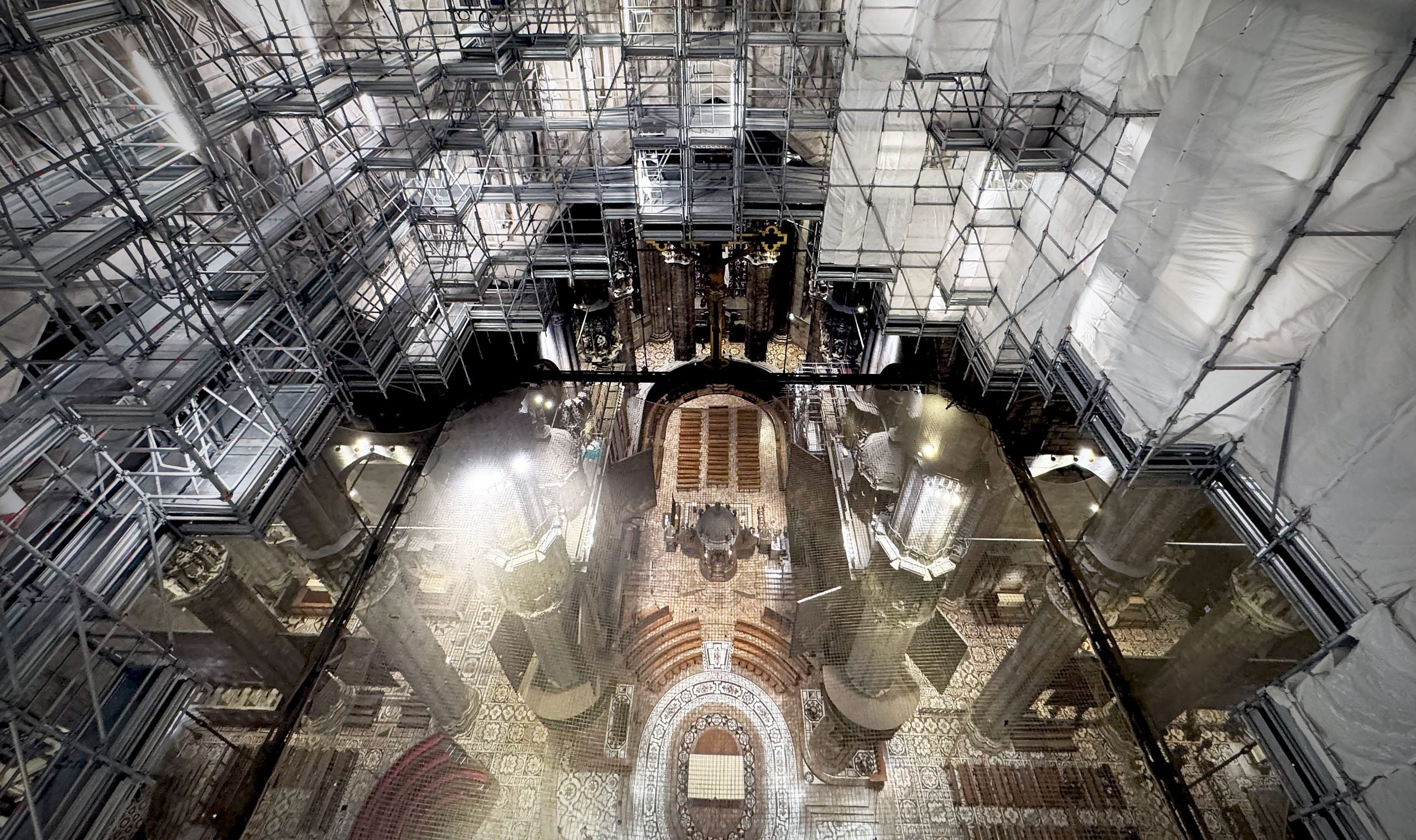
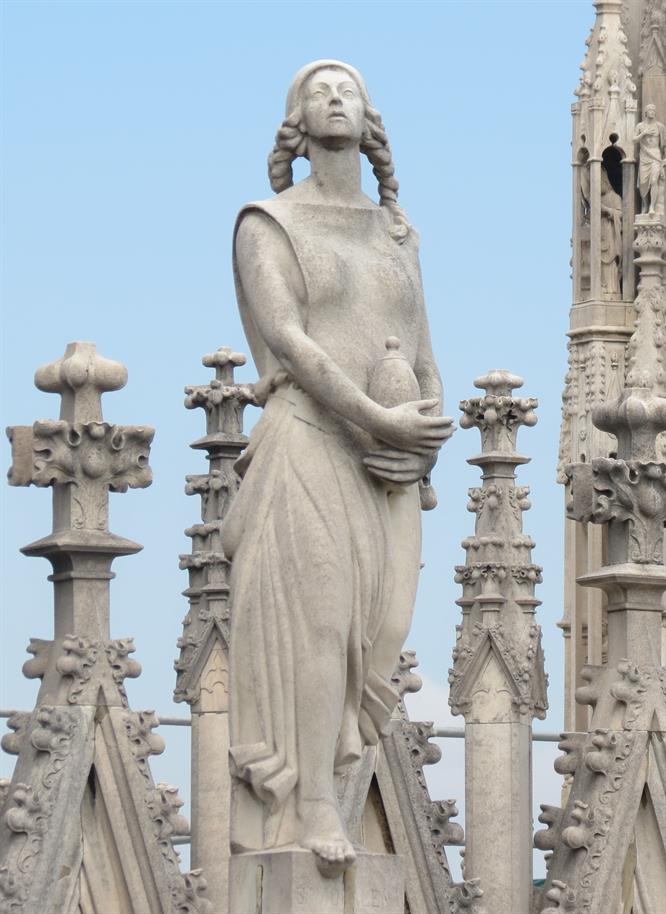
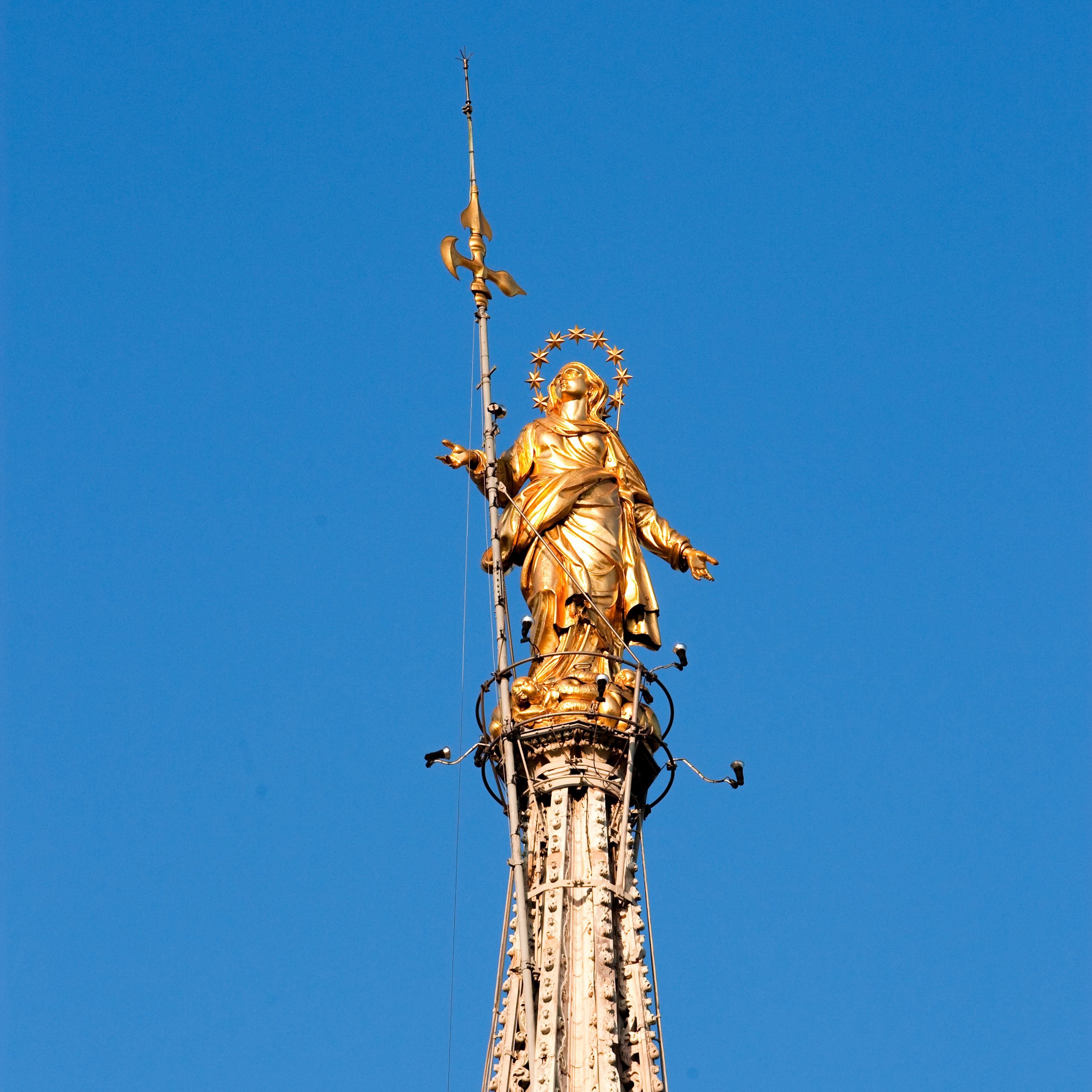
 Tiburio
Tiburio